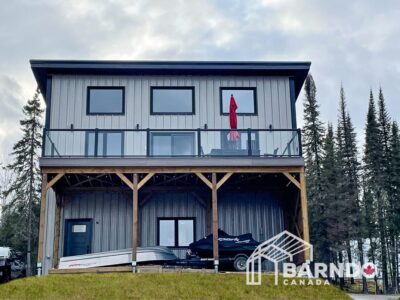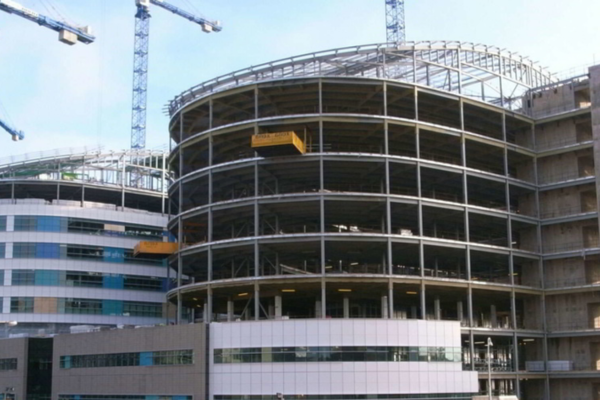
Introduction
In the realm of home construction, success often hinges not just on craftsmanship but on meticulous planning. From initial blueprints to the final coat of paint, every step in the process is interconnected, shaping the outcome of the project. Let’s delve into why planning plays a pivotal role in home construction.
Understanding the Significance of Planning
Defining Home Construction Planning
Home construction planning encompasses the detailed process of outlining every aspect of a building project before physical work begins. It involves architectural designs, material selections, budget allocations, and timelines.
The Role of Detailed Blueprints
Blueprints serve as the guiding map for construction projects. They outline the structural elements, spatial arrangements, and design aesthetics, ensuring clarity and alignment among all stakeholders involved, including architects, engineers, and contractors.
Factors Influencing Home Construction Planning
Budgeting and Financial Preparation
One of the primary factors in planning is budgeting. Construction companies, for instance, must meticulously allocate funds for materials, labor costs, permits, and unforeseen expenses. A well-defined budget helps in controlling costs and avoiding financial setbacks during construction.
Material Selection and Sourcing
Choosing the right materials is crucial for durability, aesthetic appeal, and sustainability. From eco-friendly options to high-performance materials, Construction companies must consider factors like climate resilience and long-term maintenance.
Legal and Regulatory Compliance
Adhering to local building codes, zoning regulations, and environmental standards is non-negotiable. Planning ensures that all legal requirements are met, preventing delays and potential fines during the construction phase.
Steps Involved in Effective Home Construction Planning
During the initial stages, clients collaborate closely with architects and designers to conceptualize their vision. This phase includes site evaluations, feasibility studies, and conceptual drawings to align expectations with practical realities.
Creating a Project Timeline
A detailed timeline breaks down the construction process into manageable phases, setting milestones for each stage from groundbreaking to project completion. Construction company ensures that deadlines are realistic yet ambitious, fostering efficiency and accountability.
Choosing the Right Contractors and Subcontractors
Selecting experienced contractors and subcontractors is critical. Construction company evaluates qualifications, references, and past projects to assemble a skilled team capable of delivering quality workmanship within specified timelines.
Benefits of Comprehensive Planning in Home Construction
Effective planning minimizes cost overruns by anticipating expenses and optimizing resource allocation. Construction companies can negotiate favorable terms with suppliers and subcontractors, leveraging economies of scale and avoiding last-minute procurement challenges.
Minimizing Delays and Unexpected Issues
Thorough planning identifies potential bottlenecks and logistical challenges in advance. By anticipating site conditions, weather impacts, and supply chain disruptions, the Construction company mitigates risks and maintains project momentum.
Enhanced Quality and Craftsmanship
Planning allows for meticulous attention to detail in design and execution. Construction company focuses on craftsmanship, ensuring that structural integrity, finishing touches, and aesthetic appeal meet or exceed client expectations.
Challenges in Home Construction Planning
Managing Changes and Adaptations
Flexibility is key when unexpected changes arise during construction. Construction company employs agile project management strategies to accommodate client revisions, regulatory updates, or unforeseen site conditions without compromising timelines or quality.
Weather and Seasonal Considerations
Environmental factors such as weather patterns and seasonal fluctuations impact construction timelines and logistics. Planning accounts for seasonal restrictions, ensuring that critical phases like foundation pouring or exterior work are scheduled appropriately.
Coordination Among Multiple Contractors
Effective communication and coordination among subcontractors are essential. The construction company facilitates regular meetings, progress updates, and collaborative problem-solving to maintain synergy and workflow continuity across disciplines.
Innovative Technologies Impacting Home Construction Planning
Virtual Reality and 3D Modeling
Advancements in virtual reality (VR) and 3D modeling have revolutionized the design and visualization process. Construction company utilizes VR simulations to preview architectural designs, identify spatial challenges, and refine construction sequences before breaking ground.
Advanced Project Management Software
Cloud-based project management tools streamline communication, document sharing, and real-time updates. Construction company integrates software solutions for scheduling, budget tracking, and collaboration, enhancing transparency and efficiency throughout the project lifecycle.
Environmental and Sustainability Factors
Construction company prioritizes energy-efficient building materials, renewable energy solutions, and sustainable construction practices. Planning incorporates green building certifications and environmental impact assessments to minimize carbon footprints and maximize operational efficiency.
Waste Reduction and Recycling Strategies
From construction debris to packaging materials, waste reduction strategies play a crucial role. Construction company implements recycling programs, salvage reusable materials, and adopt prefabrication methods to minimize waste generation and promote environmental stewardship.
The Role of Architects and Designers in Planning
Customization and Personalization
Architects and designers collaborate closely with clients to translate vision into reality. The construction company offers tailored solutions, from architectural aesthetics to interior layouts, ensuring functional spaces that reflect individual preferences and lifestyle needs.
Balancing Aesthetic Appeal with Functionality
Design considerations encompass both aesthetic appeal and functional efficiency. The construction company integrates ergonomic principles, spatial optimization, and innovative design concepts to enhance livability and usability throughout residential projects.
Future Trends in Home Construction Planning
Prefabricated and Modular Construction
The rise of prefabricated and modular construction methods accelerates project timelines and reduces onsite labor dependencies. Construction company explores off-site manufacturing options, precision engineering, and modular components for faster, cost-effective construction solutions.
Integration of Smart Home Technologies
Smart home technologies enhance comfort, convenience, and energy management. Construction company integrates IoT devices, automated systems, and sustainable technology solutions into home designs, creating connected environments that adapt to occupants’ lifestyles.
Conclusion
Effective planning is the cornerstone of successful home construction projects. By meticulously coordinating design, resources, and timelines, the Construction company not only meets client expectations but also exceeds industry standards for quality, efficiency, and sustainability.











